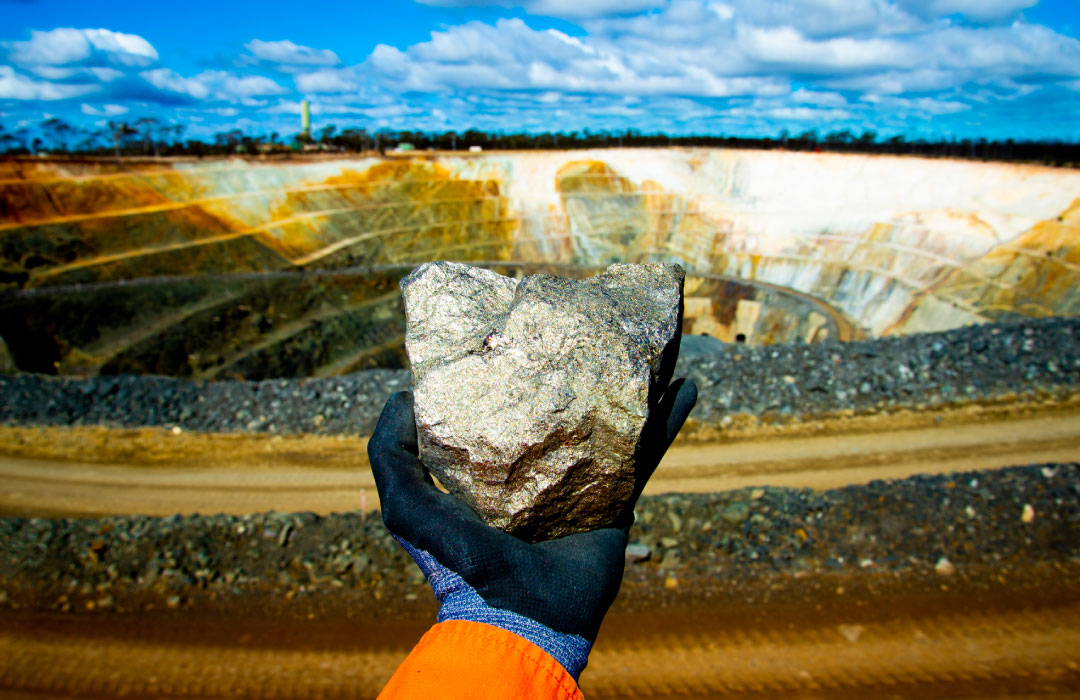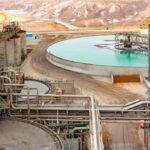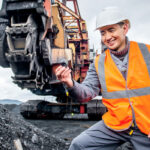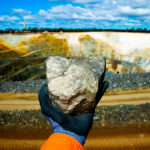The Impact of Mining on the Minerals Market in the Green Energy Transition
Recently, in our article “Is mining a Hero in the Green Energy Transition?”, we proposed it would be followed up by three other blogs focused on what this means for:
- The minerals markets
- The capital markets and
- International trade
This article focuses on the impact on the minerals market of mining to being green. At Projects RH we are impacted by this as our clients are very much driven by demand for investment into new greenfield and brownfield projects in the minerals sector. The availability of funds depends on what investors believe will happen, sometimes referred to as investor sentiment.
This so called “sentiment” is driven by logic and numbers, such as counter-cyclical investment and sometimes a belief that the market has simply got it wrong.
Let´s explore why and what it means in the current circumstances. I, for one, struggle to understand why so many well placed, but early-stage projects, are struggling to raise capital when logic tells us that the established mines are heading to the end of their lives and are not being replaced.
Mining is the unsung hero of the green transition.
It extracts the critical minerals essential for clean energy technologies: such as magnets, batteries, wind turbines, and solar panels. There is a twist based on market data by 2030, our mines will only produce about half the cobalt and lithium and around 80% of the copper required. Yet cobalt and lithium are not at prices that reflect the margin needed to build new mines and mineral processing plants.
The market is not reading the usual signals.
The construction of new mines needs environmental reports, community acceptance and government approvals and all these add to the time to get into production. This time delay can also be extended by having to wait for equipment to be made to order and assembled at site.
Can long-term demand remove mining’s boom and bust pricing cycles?
For anyone who has been involved with resources for more than 20 years, they will have lived through at least one mining price cycle. Basically, where it becomes clear that a shortage is emerging, prices rise, all around the world the next round of projects suddenly become economically viable, and investors “see” current prices remaining strong for at least 5 years.
Around the world, the same signal is observed, and investment begins with ordering equipment for the construction of approved projects. Funds are allocated for exploration, and construction commences swiftly. However, within a few years, an oversupply emerges, causing prices to decline. Eventually, exploration ceases, and commodity prices drop to the cash production cost of the marginal producer needed to meet the new demand level.
This is why smart investors want to invest in projects with relatively low cash costs, so they remain cash-positive even at low prices.
Launching a new mining project
Many undeveloped projects are known but need more work before they are considered ready to develop. They need sampling, resource studies and a bankable feasibility study (BFS).
The mining industry must be bold in its search for new deposits. This involves venturing beyond familiar territories, investing in exploration, and uncovering untapped mineral wealth. Then parties like Projects RH need to prepare information for sophisticated investors and mining specialists. These will be provided by the company and investment consultants like Pan Ocean Advisory Group to suitable investors who will likely want to see the BFS and review a resources statement in the form of a Canadian National Instrument 43-101 or an Australian JORC Statement. (These standards are used globally.)
Investors want best-proven technology with innovation to gain efficiencies such as smarter extraction methods and efficient processing
Minerals are where you find them
One of the issues in the resources sector is that minerals are found where you find them, but the ability to deliver a project will depend on risk considerations, including logistics, weather, and sovereign risk.
We are currently seeing nations wanting to secure resources from parts of the world where their supply chains have the least risk of disruption. The closure of many projects during Covid-19 demonstrated the value of highly technical, low direct labor, and mechanized production and transportation. At a time when many ceased being able to supply the high labor cost, nations such as Canada and Australia demonstrated their dependability and capacity to supply. This, coupled with their political stability, is seeing them favored for some projects.
Getting more from existing mines
As prices rise, mining methods allow more marginal parts of existing resources to be developed. This can add to the production and expand the life of a mine. While this may be welcomed by the investors, it really does not address in a substantive way to the available supply.
Today companies invest in optimizing existing mines to extract minerals more efficiently, pending improved technologies and regulations that have reduced environmental impact in recent years.
As demand for critical minerals grows, companies expand existing operations. While this expansion requires substantial investment, it is often able to use existing infrastructure and transport corridors. This allows marginal production at a lower cost than a new mine, but it may shorten the life of the existing mine plan.
One positive trend we are observing is that with the high prices of copper, gold, and silver, it is now economically viable to rework the tailings of mines developed decades ago. Back then, the rejects sent to the tailing ponds contained much higher amounts of the sought-after mineral compared to today, thanks to new technologies. Reprocessing tailings not only offers cost savings over mining but also requires more environmentally friendly disposal methods than those used twenty or more years ago.
We are seeing reprocessing opportunities in Tasmania, Colombia and Mongolia.
The future for a mining company
The ongoing life of a mining or resources company depends on its “land bank” of reserves for future exploration. As mines deplete, mining companies' investment shifts toward finding replacement projects. Exploration for new deposits becomes crucial but this investment is often undertaken by specialized early-stage companies which find and develop projects with the expectation to sell them to major mining groups which have the expertise and capital to develop them.
The experience of big mining companies is like that of big pharma. It is more cost-effective and efficient to acquire and develop a project than to conduct exploration themselves. When faced with such situations, big mining or big pharma often express that they could not achieve it for the price, and that their shareholders would require quarterly reporting, leading to them having to clarify that they did not discover what was being looked for. The underlying concern is that their boards and management prefer to concentrate on a limited number of priorities, with exploration not being one of them.
One of our concerns at Project RH is that we are not seeing investments in the exploration companies and mid-tiers that are developing enough projects or conducting resource studies and BFS's.
What´s next?
With the implementation of the US Inflation Reduction Act, there is strong support for resource development to meet the production needs of the US industry. The industry is receiving grants to produce critical components and to transition to a more environmentally friendly economy, in addition to tariffs imposed on Chinese-manufactured goods.
Projects RH’s discussions with project developers in the USA demonstrate they know they will need to use resources from the USA and preferred suppliers such as Canada, Australia and Chile.
This encourages them to either invest in such projects or add their credit by providing long-term contacts which allow the project to raise funds using traditional project finance models.
US operating OEMs, including US subsidiaries of multinationals, know they will need “local” lithium, copper, rare earths etc. to allow them to compete within the US market where they will need to produce local products from raw materials and employ high-cost US labor. This is not a political decision but dealing with a market reality.
SCMA – Setting the rules for sustainable mining
SCMA is an organization working in the background of producing green minerals. It is important but keeps a low profile. The Sustainable Critical Minerals Alliance was announced at COP15 in Montréal. It began as an association between Canada, Australia, Germany, France, Japan, the United Kingdom and the United States. These member states will voluntarily work on developing sustainable and inclusive mining practices and sourcing critical minerals that:
- Employ a nature-positive approach,
- Support local and Indigenous communities,
- Help fight climate change,
- Restore ecosystems,
- Build a circular economy and
- Foster ethical corporate practices.
Members of the Alliance continue to pledge to work together through existing forums. It is clearly about raising the bar and setting standards, even if they are costly for companies and industries they regulate.
Mining’s New Horizon: Sustainable Goals and Market Realities
What we are witnessing is that the bar has been raised, and companies must adhere to the United Nations Sustainable Development Goals if they want to embark on new projects. Suppliers in Europe and the USA are now facing additional challenges, but the market comprehends this, and prices need to reflect it.
Responsible mining investment is essential for a sustainable, low-carbon future. Balancing economic growth, environmental protection, and social well-being remains the challenge. The markets are now expecting that all participants will meet the social license of being able to produce the bounty of the earth which belongs to our common humanity. Businesses will do this and provide the materials needed only as long as it is economically viable. We are seeing real price increases which make compliance feasible.
The business wheels will ensure that essential materials for our greener future are provided, as long as the signals are clear, and they receive a fair price. Currently, we are in a period of rapid change, but the rules are becoming clearer, and money is being provided by the Inflation Reduction Act, and similar legislation in many countries, to allow costs to be offset.
At Projects RH, our clients see a bright future for the minerals sector, with investors embracing opportunities for developed projects. Hopefully, this will soon spread to exploration companies.
By Paul Raftery, CEO of Projects RH.
If you have a mining project…
Please send you materials to paulraftery@projectsrh.com and then book a time to speak at https://outlook.office365.com/owa/calendar/PaulRafteryProjectsRH@projectsrh.com/bookings/ Please allow me 24 hours to send a link and read your summary.
Gain Investor Confidence with Projects RH: Effectively prepare your mining project for success in securing the funding you require. Unlock the power of eco mining and join the exciting journey toward a more sustainable tomorrow!







